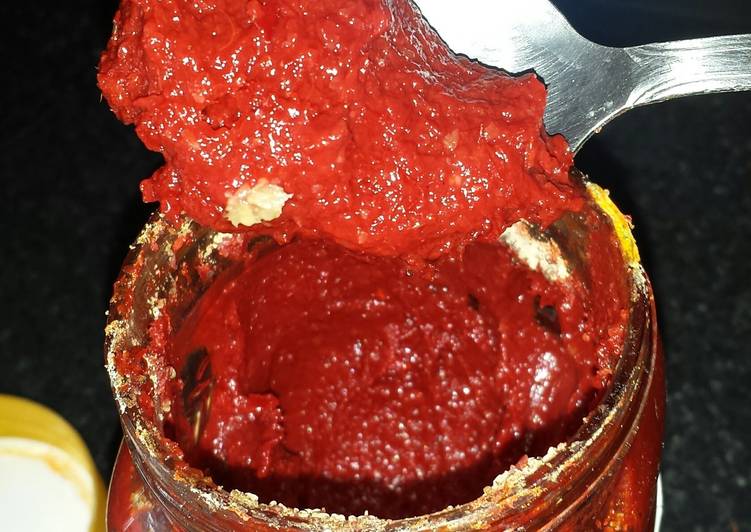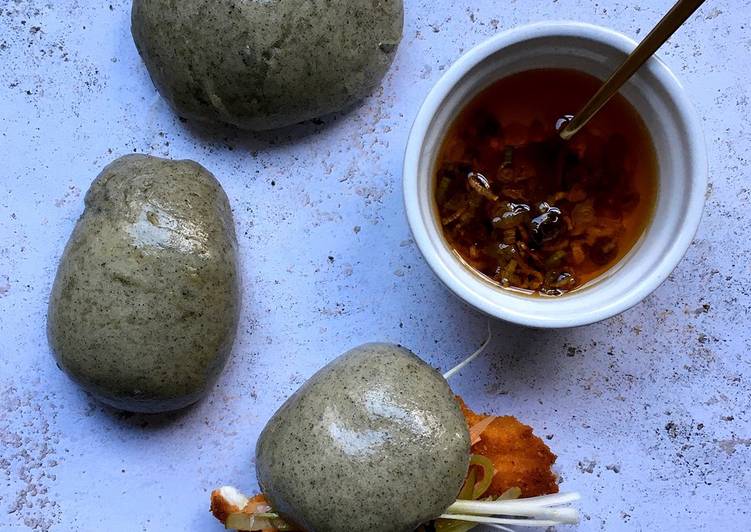
Hello everybody, I hope you are having an incredible day today. Today, I’m gonna show you how to prepare a distinctive dish, pimentao (the traditional way). One of my favorites. For mine, I’m gonna make it a little bit unique. This is gonna smell and look delicious.
Pimentao (The Traditional Way) is one of the most popular of recent trending meals on earth. It is simple, it is fast, it tastes delicious. It is appreciated by millions every day. They are fine and they look fantastic. Pimentao (The Traditional Way) is something that I’ve loved my entire life.
Great recipe for Pimentao (The Traditional Way). This is the way my grandmother does pimentao. Its basically a portuguese marinade we use for any meat be it grilled, stewed or roasted. It goes great with any kind of meat.
To get started with this recipe, we have to prepare a few ingredients. You can have pimentao (the traditional way) using 2 ingredients and 20 steps. Here is how you cook that.
The ingredients needed to make Pimentao (The Traditional Way):
- Take 24 Red Peppers
- Make ready 4 cup coarse sea salt (more or less)
Until you've actually tried it, it is very hard to describe its unique taste—somewhat salty, somewhat bell peppery, not at all hot, but very, very rich and flavorful! Massa de pimentão (pronounced " mah-ssah de pea-meant-ow") is a sweet yet salty pepper paste made from salt cured red bell peppers. It's found throughout Portuguese cooking as a base for sauces and stews, as a marinade for meats or fish and is also used as a condiment. The official Collins Portuguese-English Dictionary online.
Steps to make Pimentao (The Traditional Way):
- I'm not entirely sure how much this makes because my grandmother always does it by the box load (she normally uses around 100-200 peppers) but roughly estimating it should give you 4-6 cups of pimento paste. Its easy enough to prepare, what takes a while is the stage where you have to let it sit.
- Its always great if you grow your own red bell peppers, my grandparents all own farms so they have the space for it but if you don't then not to worry, shop brought red peppers will do just as good a job. With the red peppers leave them at room temperature out of direct sunlight for 2-3 weeks until they turn soft (leave peppers for longer if they are not yet soften).
- When they have turned soft, rinse them under water and let dry.
- Next cut each pepper in half and remove stems and as many seeds as possible (don't worry if there is a few left).
- A small storage plastic box with wholes on either side and bottom will do the best job. Don't use a box that's enclosed because all the water will accumulate at the bottom, you want it to seep out slowly.
- Line the box with thick un-laminated paper (a couple of sheets of newspaper will do the job) or an old washed cotton piece of clothing such as an old pillow case (will be even better as no need to line with kitchen roll after). Next line with kitchen paper towels (no need to do if using clothes).
- The layering process, First cover the bottom of the box with salt (don't be shy with it). Next place the peppers face down on the salt, then do another layer of salt, then peppers and so on until you have no more peppers left. The last layer should be salt. You want as much salt to cover each layer of the peppers as possible.
- Cover the top with kitchen roll and then thick paper or cloth (no need to cover with paper if covering with cloth).
- Add a few heavy stones on top to compress it all down.
- Leave the box of peppers and salt for 2-4 months outside as it will leak. Preferably out of direct sunlight and in a dry place (underneath shelving on the floor in a greenhouse would be an ideal spot). If you have an old metal rack place it under the box.
- The salt will cook the peppers, you know they will be ready to turn into paste when they go really floppy when you pick them up.
- Try saving as much of the salt because that would have absorbed the red pepper flavour (my grandmother throws most of it away). You only want about 1 layer of salt in your paste.
- Shake or tap each pepper on top of the box to reduce the amount of salt going into the paste. Do this for each pepper and place into another bowl.
- Using a meat grinder feed the peppers through slowly. You can also do this in a food processor, on 30 seconds bursts.
- The end result should be a bright red sticky paste (if you hold a spoon upside down it should remain on the spoon firmly, thats the type of consistency your going for).
- Next spoon the mixture into a sanitizer glass jar. Seal and Store in a cool dry place until needed. (No need to place in fridge). 1-2 tablespoons of paste is all you need per kilo of meat.
- Now for the salt, preheat your oven to its lowest settings.
- Transfer the moist salt into a shallow tray and spread evenly.
- Place in oven and heat until it is completely dry (Roughly estimating between 2-3 hours). Once done let it cool. The other alternative is placing it on a shallow tray and letting it air dry by your window or somewhere dry (Roughly 2-3 days).
- Once the salt is completely dry, transfer to an airtight container or glass jar and store in a cool dry place until needed.
It's found throughout Portuguese cooking as a base for sauces and stews, as a marinade for meats or fish and is also used as a condiment. The official Collins Portuguese-English Dictionary online. In an interview on The Splendid Table for his book The New Portuguese Table, David Leite was asked what one flavor or ingredient makes Portuguese food distinctly Portuguese. Without hesitation, he answered, "Massa de pimentão." Leite says that this spice is made from red bell peppers that have been salted, cured, and then ground into a paste. Pimentos, also referred to as pimientos, are a type of pepper with a sweet flavor and very little heat.
So that’s going to wrap it up with this special food pimentao (the traditional way) recipe. Thank you very much for reading. I am sure you will make this at home. There is gonna be more interesting food in home recipes coming up. Remember to save this page on your browser, and share it to your loved ones, friends and colleague. Thank you for reading. Go on get cooking!

